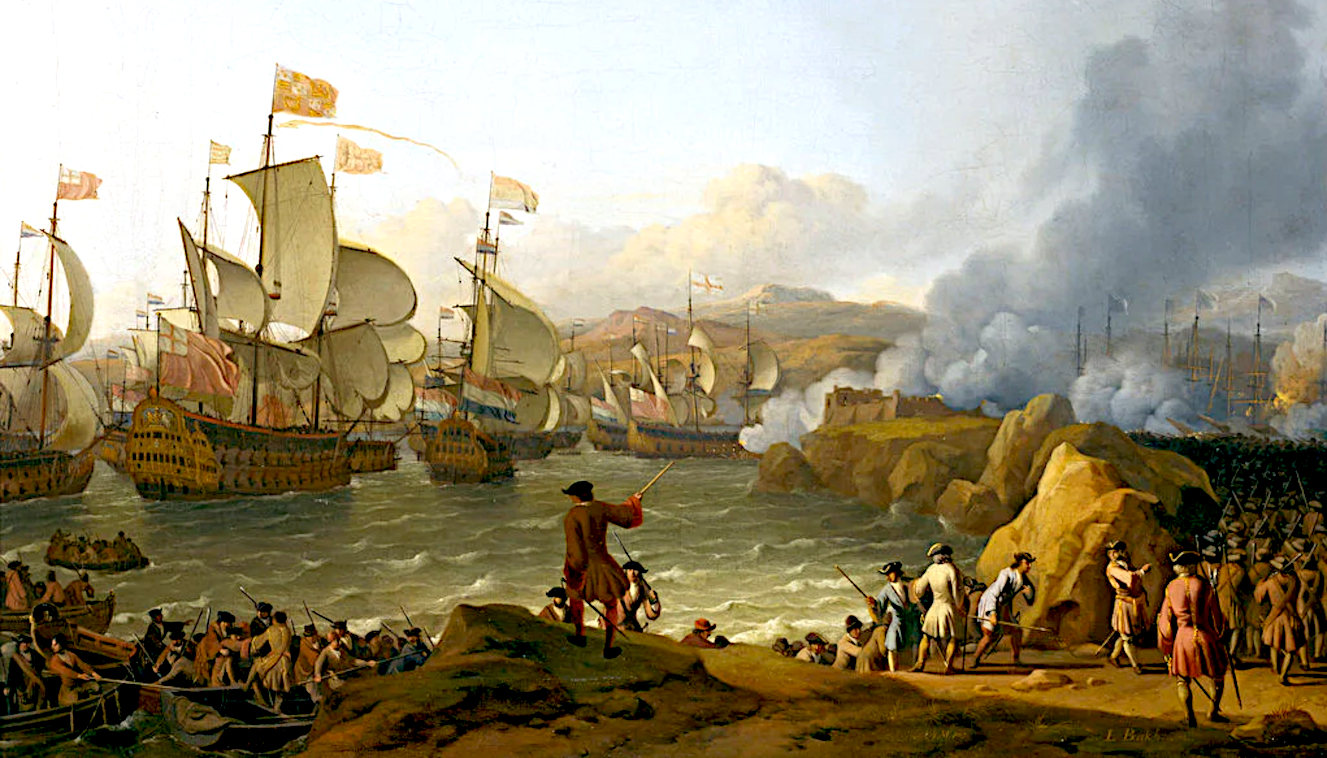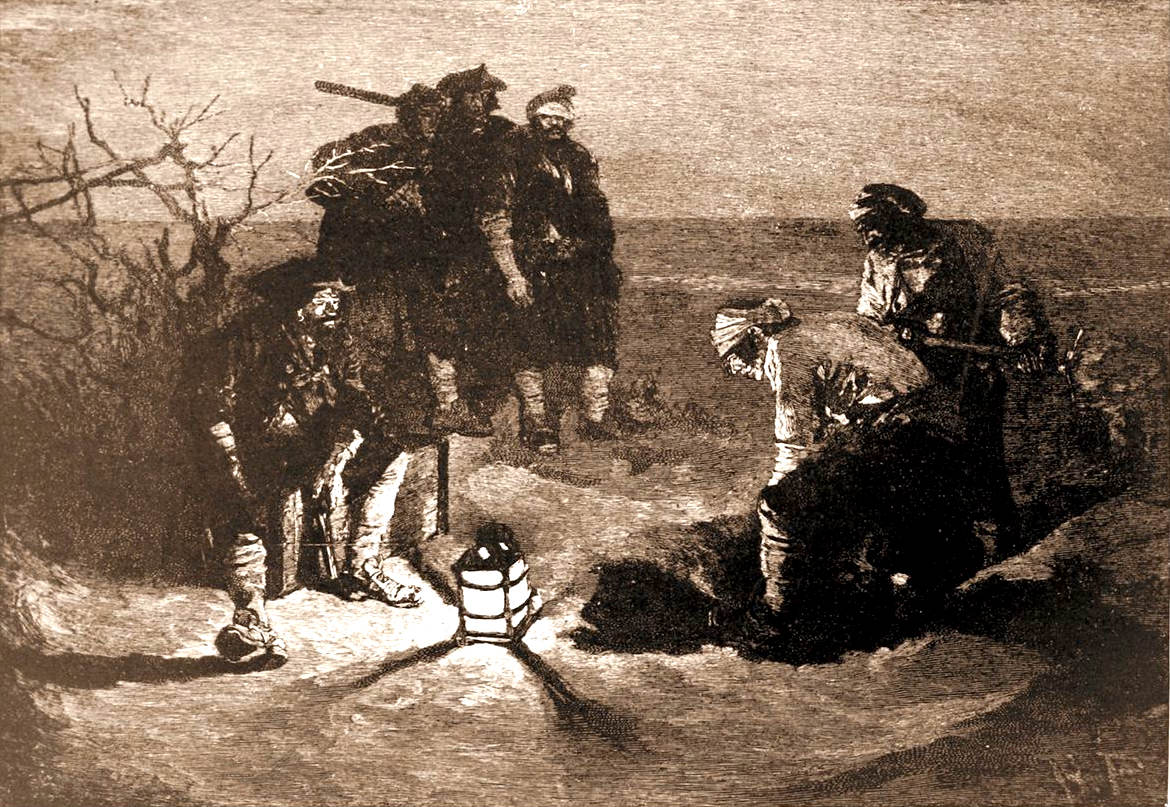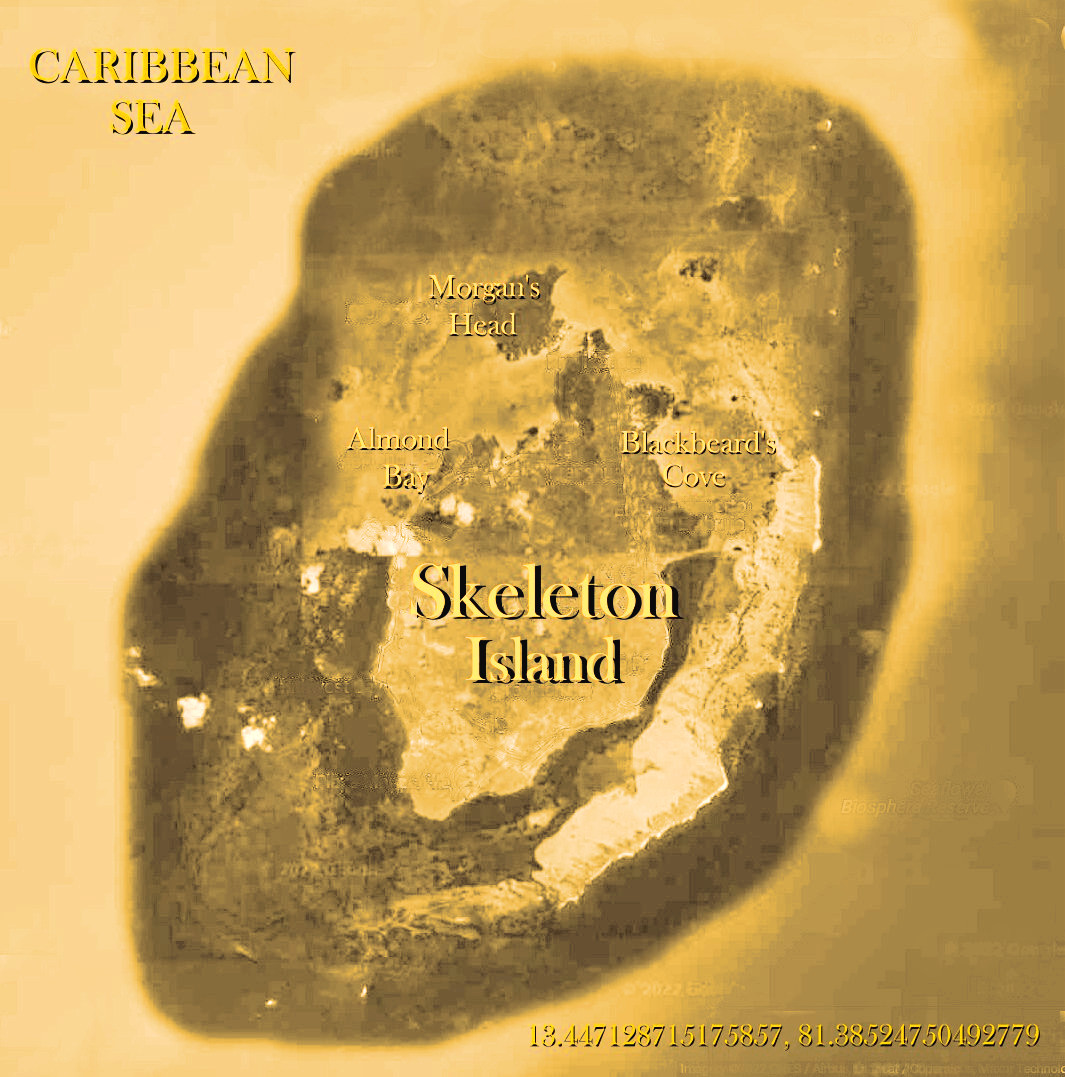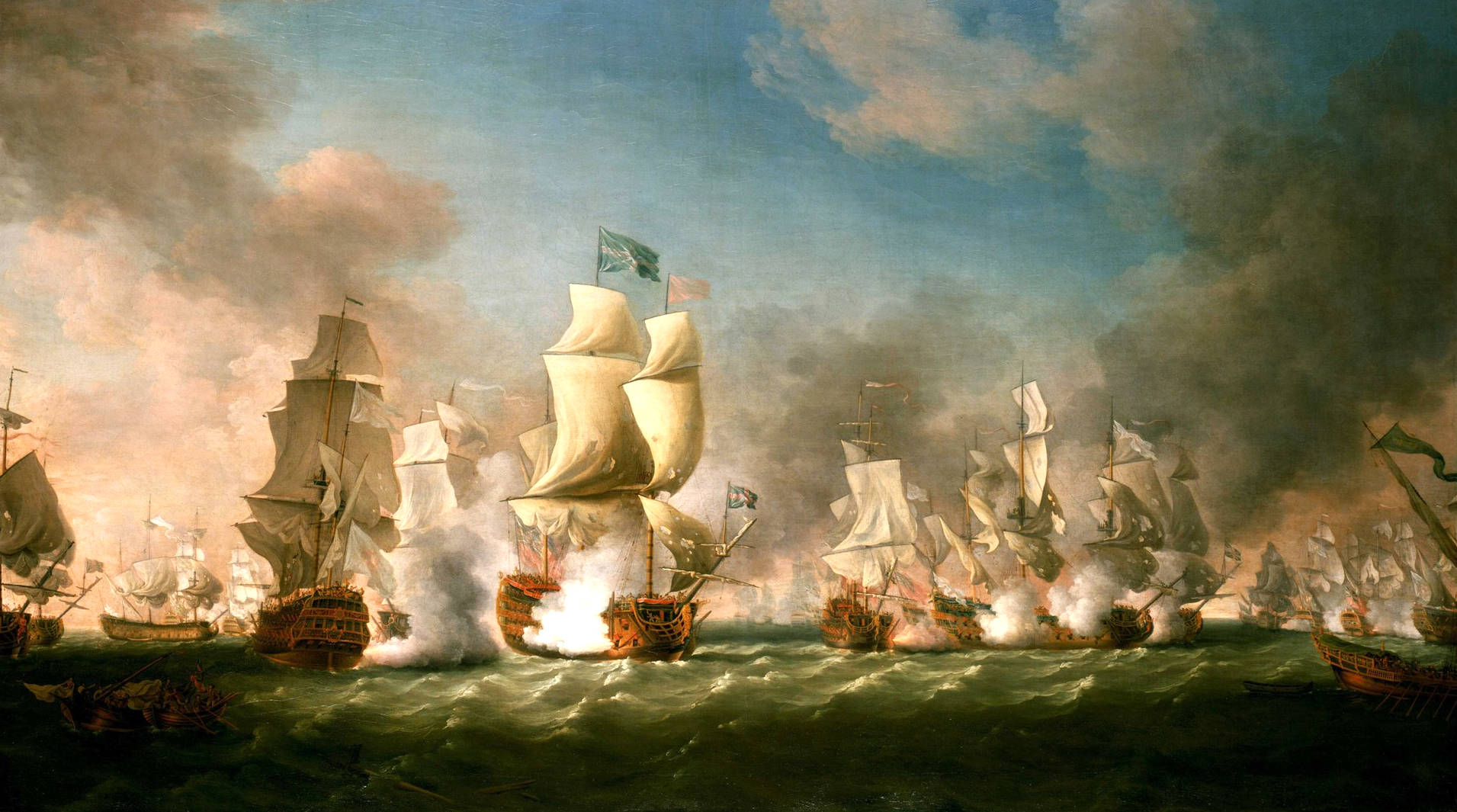|

Edward
Teach, better known as Blackbeard, is known to have fought in the
inter-colonial wars of Spanish Succession. This is where he honed his skills
as a privateer, and learned how to sail, shoot canon and board prize ships
and take their passengers captive.
QUEEN ANNE'S WAR
Queen Anne's War (1702–1713) was the second in a series of French and Indian Wars fought in North America involving the colonial empires of Great Britain, France, and Spain; it took place during the reign of Anne, Queen of Great Britain. In Europe, it is generally viewed as the American theater of the War of the Spanish Succession; in the Americas, it is more commonly viewed as a standalone conflict. It is also known as the Third Indian War. In France it was known as the Second Intercolonial War.
The war broke out in 1701 and was primarily a conflict among French, Spanish and English colonists for control of the North American continent while the War of the Spanish Succession was being fought in Europe. Each side was allied with various Indigenous communities. It was fought on four fronts:
1. In the south, Spanish Florida and the English Province of Carolina attacked one another, and English colonists engaged French colonists based at Fort Louis de la Louisiane (near present-day Mobile, Alabama), with Indigenous bands allied on each side. The southern war did not result in significant territorial changes, but it resulted in seriously decimating the Indigenous population of Spanish Florida and parts of southern Georgia, with destruction of the network of Spanish missions in Florida.
2. In New England, English colonists and Indigenous allies fought against French colonists and their Indigenous forces, especially in Acadia and unsettled border frontier with Canada. Quebec City was repeatedly targeted by British colonial expeditions, and the British captured in 1710 the Acadian capital Port Royal. French colonists and the Wabanaki Confederacy sought to thwart British expansion into Acadia, whose border New France defined as the Kennebec River in what is now southern Maine. They executed raids in the Province of Massachusetts Bay (including Maine), most famously the Raid on Deerfield in 1704 and one on Groton in 1707, in both cases taking numerous captives to Montreal and Kahnawake (a Mohawk mission village) for ransom or adoption by Mohawk families.
3. In Newfoundland, English colonists based at St. John's disputed control of the island with the French colonists of Plaisance. Most of the conflict consisted of economically destructive raids on settlements. The French colonists successfully captured St. John's in 1709, but the British colonists quickly reoccupied it after the French abandoned it.
4. French privateers based in Acadia and Placentia captured many ships from New England's fishing and shipping industries. Privateers took 102 prizes into Placentia, second only to Martinique in France's American colonies. The naval conflict ended with the British capture of Acadia (Nova Scotia).
The Treaty of Utrecht ended the war in 1713, following a preliminary peace in 1712. France ceded the territories of Hudson Bay, Acadia, and Newfoundland to Britain while retaining Cape Breton Island and other islands in the Gulf of St. Lawrence. Some terms were ambiguous in the treaty, and the concerns of various Indigenous communities were not included, thereby setting the stage for future conflicts.
BLACKBEARD'S
TRAINING
Blackbeard was an English-born pirate, whose real name was Edward
Teach, or Thatch, depending on which historian you consult. He is believed to
have started as a privateer in the Spanish Succession War, fought from 1701
to 1714. Also known as Queen Anne's War.
Primarily driven by a desire for access to Spanish markets in the Americas. Modern economists generally assume a constantly growing market, but the then dominant theory of Mercantilism viewed it as relatively static.
Where, increasing one's share implied taking it from someone else, and the role of the state was to restrict foreign competition by attacking merchant ships and colonies.
It
is easy to see, that as this was a way of life for many, for some years,
including Blackbeard, that it would be hard to change your views, as peace
was declared, but not all were abiding by such Agreements.
In 1700, Spain remained a great power in terms of territory controlled, while recent research shows imports of bullion from the Americas actually reached their highest level between 1670 and 1700. However, this concealed major structural weaknesses; the vast majority of these imports were used to fund debt or pay foreign merchants. When the new Bourbon administration took over in 1701, they found the Empire bankrupt and effectively
defenseless, with fewer than 15,000 troops in Spain itself and a navy consisting of 20 ships in total.
Almost constant warfare during the 17th century made the economy subject to long periods of low productivity and depression, and largely reliant upon others for its prosperity. In many ways, the continued existence of the Empire was not due to Spanish strength but to maintain a balance between the powers competing for a share of its markets.
The close links between war and trade meant conflict extended beyond Europe, particularly in North America, where it is known as Queen Anne's War, and the
West
Indies, which produced sugar, then a hugely profitable commodity. Also, there were minor trade conflicts in South America, India, and Asia; the financial strains of war particularly affected the Dutch East India Company, as it was a huge drain on scarce naval resources.
Finally, while colonial conflicts were relatively minor and largely confined to the North American theatre, the so-called Queen Anne's War, they were to become a key element in future wars. Meanwhile, maritime unemployment brought on by the war's end led to the third stage of the
Golden Age of
Piracy, as many sailors formerly employed in the navies of the warring powers turned to piracy for survival.

After the war had officially ended, Blackbeard sailed to the Carolinas
where he blockaded Charleston with several ships and 700 men. He was pardoned by the king, then settled down in
Bath, North Carolina with Mary Ormond - the 14th Mrs. Blackbeard. Teach was betrayed by a southern governor who had been sharing in his booty.
The pirate died with 20 knife and five gunshot wounds soon after, the
betrayal.

SKELETON
ISLAND - Sir Henry Morgan
visited this island on many occasions, though his plantations were in
Jamaica, and he lived in Port Royal, where he enjoyed the high life. On some
pirate parchments Blackbeard's Cove is marked. On modern maps only Morgan's
Head is acknowledged - simply because Edward Teach did not manage to retire,
pardoned, but cut off in his prime. Today we know the above as Isla
de Providencia, Columbia.
THE
BATTLE OF OCRACOKE 22ND NOVEMBER 1718
It began within minutes after the notorious pirate Blackbeard was killed in the Battle at Ocracoke on Saturday morning, November 22nd 1718.
As soon as the wounded were attended to and the surviving pirates were placed under guard, the hunt was on, led by Royal Navy
Lieutenant Robert
Maynard. The first place they searched was Blackbeard’s cabin in the roundhouse of his 65-foot-long Jamaica-rigged sloop, Adventure. Surely the world’s best-known and most-feared pirate captain kept a chest of Spanish gold, silver and jewels hidden beneath his bunk, just for his walkin’ around money.
Rarely mentioned in the many books, articles and other accounts of the famous battle is that Maynard and the other volunteer sailors from the British king’s ships stationed in Virginia were persuaded to accept the potentially deadly assignment of apprehending or killing the North Carolina pirates by the prospect of acquiring pirate treasure. It could be said that the 60 men aboard the two, small, rented sloops under Maynard’s command were little more than pirates themselves.
Maynard’s stay at Ocracoke may have been when an enduring Blackbeard myth was born. While nine captive pirates were held in the lower deck of the Adventure while anchored in the yet-to-be-named Teach’s Hole Channel, a guard may have asked them,
so, where did the boss hide his treasure? Funny you should ask, a pirate replied, we posed that question to him just last night.
The published version of the interrogation in a 1724 book, ”A General History of Pirates,” goes like this: “… one of his Men asked him, in Case any thing should happen to him in the Engagement with the Sloops, whether his Wife knew where he had buried his Money? He answered, That no Body but himself and the Devil, knew where it was, and the longest Liver should take it all.”
At the end of the two weeks at Ocracoke, Maynard sailed Blackbeard’s ship
'Adventure' across Pamlico Sound and up to Bath, but not with the pirate’s head hanging under the bowsprit as is so often told – it was too valuable, worth a bounty of 100 pounds sterling back in Virginia.

We
are asked to believe that Edward Thatch, was not a successful, or wealthy pirate.
But given his years as a privateer, then pirate, one wonders what happened
to all of the booty he purloined.
Compare Blackbeard’s final estate to Capt. William
Kidd’s £14,000 worth of gold,
silver, and
jewels; or the East Indian pirate Henry Every’s much more impressive £350,000 haul; or Sam Bellamy’s estimated plunder of as much as a million pounds sterling. But that all ranks well below
Sir Francis
Drake’s massive piratical treasure of £1.5 million valued in 1582. It
appears that Sir Francis was the greatest pirate of them all.
https://
|


